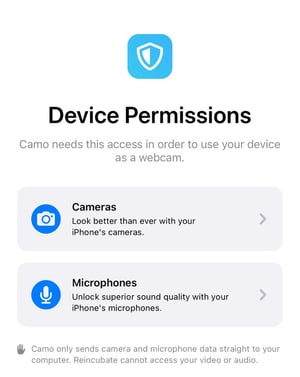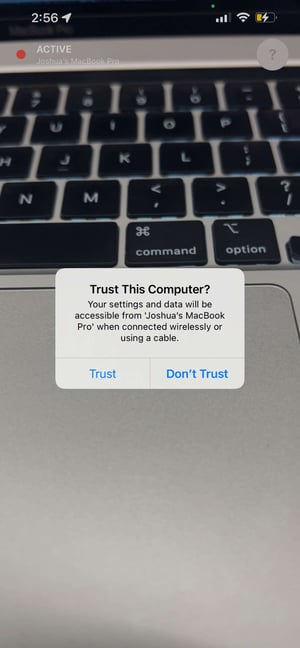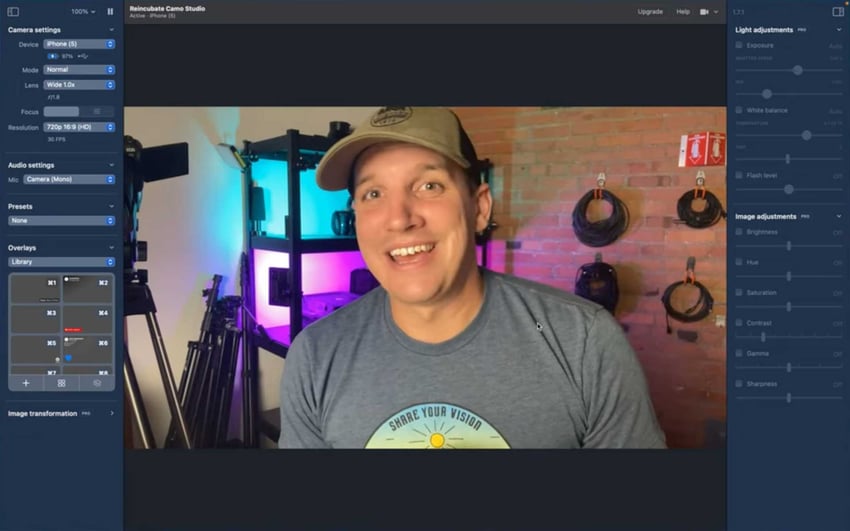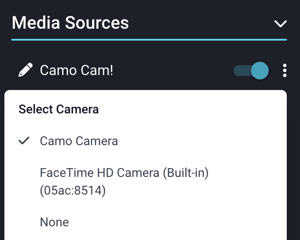Broadcasting, Live Streaming Software, How To Live Stream

BoxCast Team • August 31, 2022
The camera built into your smartphone is often a better option than the webcam that’s built into your laptop or computer, so it makes sense to use it as a webcam. If you’d like our recommendation and an easy how-to guide for the best app to use your phone as a webcam, keep reading.
You may not realize it, but using your smartphone’s camera as a webcam is actually fairly simple, and can make a dramatic difference in the image quality of anything you’re streaming — whether it be yourself or another subject.
In this article, we’ll walk you through a few quick, easy steps that show you how to use your smartphone as a webcam with the Camo app and BoxCast’s Producer streaming software.
Let’s get started.
In order to activate your smartphone as a webcam, you’ll need to have Camo installed on both your computer and your smartphone. Visit the Camo Downloads page to get the software on your computer. Then download the app on the App Store or on Google Play.

Once you open the Camo app, enable permissions so the app can use your phone’s camera and microphone. After you’ve done that, you can connect your phone to your computer.
Now that you have Camo downloaded on both devices, you’ll need to connect your phone to your computer using a USB Type-C or Lightning Cable, depending on the ports available on your laptop.
Note: Camo Studio highly recommends connecting your phone directly to the computer to avoid any connectivity issues with dongles and USB hubs. Try using a direct cable connection whenever possible.
Once you're connected, open up Camo Studio on your computer, and then the Camo app on your smartphone. Your phone may pop up the prompt below. You’ll need to click Trust to allow the phone to share video with your computer.

When you’re in Camo Studio and connected to your phone, you’ll notice there are a few simple image adjustments you can make in the free version that will enhance your image. You’ll have to upgrade to the Pro version ($79.99 for life or $4.99 monthly) to use its more advanced features, but the free version still gives you some basic functionality to make your video look great. For example:

Once you have your framing, lighting, and subject in position, it’s time to go live! Camo Studio works with dozens of streaming apps, like Zoom, Google Meet, and Producer by BoxCast!
Like cheese and wine, Camo Studio pairs perfectly with Producer. Our streaming software gives you the ability to go live right from your web browser and produce virtual and hybrid events in minutes.
You can easily incorporate your Camo feed into Producer by selecting it as the Camo Camera under Media Sources in Producer. You can also select your Camo Camera as your audio source in Producer as well if you’d like.
Note: In order for your Camo feed to stay active with any streaming/meeting software, you’ll need to keep both Camo Studio and the Camo app open on your devices to maintain the camera’s connection to Producer or other streaming software. So make sure you’re using your smartphone as a dedicated camera.

Yes. Using the Camo mobile app and Camo Studio on your computer, you can easily turn the camera on your smartphone into a webcam for live streaming and recording.
Yes — the main feature of converting your smartphone into a webcam comes with the free version of Camo. For more features, you'll have to go with the Pro version.
Yes, Camo studio works with Producer by BoxCast, along with dozens of other apps (like Zoom, Google Meet, Microsoft Teams, Streamlabs, Skype, Twitch, and Final Cut Pro X) and dozens of video recording and streaming products.
Yes, the Camo app is available for iOS and Android devices, as well as with Mac and PC computers.
Start streaming for free with Camo and Producer today.
Using your smartphone as a webcam is a great way to save money while producing high-quality content. As you get more comfortable producing content from your smartphone, you may want to consider other ways to enhance your stream quality without breaking the bank. These posts will help you improve your audio, lighting, and streaming software:
© 2025 BoxCast. All Rights Reserved. | +1-888-392-2278